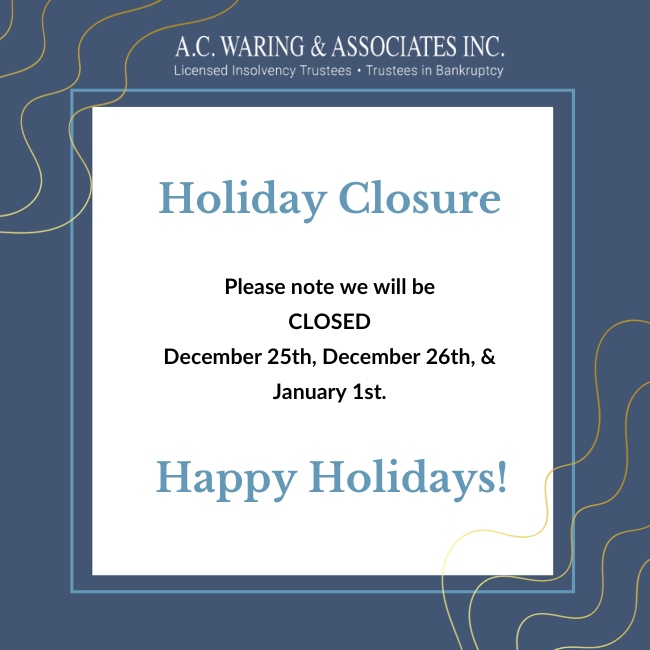If you’re one of the millions of Canadians who have applied for and received the Canada Recovery Benefit (CRB) or the Canada Emergency Response Benefit (CERB), you may have breathed a sigh of relief to have some financial support in an unpredictable time. At the same time, you may be wondering what the best ways to use your CERB or CRB funds are while you deal with uncertainty during the COVID-19 pandemic and related job insecurity. Should getting out of debt be your first goal? And what about tax time?
What is the Purpose of CERB, CRB, and Other Pandemic-Related Income Supports?
The primary purpose of CERB, which was available to Canadians until September 27, 2020, was to be a modified form of employment insurance to support individuals if they had to stop working due to the pandemic. That included individuals who couldn’t work because their jobs were unavailable; who had to self-isolate or quarantine or were recovering from COVID-19; or who needed to care for family members.
The CERB program has closed, but now CRB is available for Canadians who aren’t able to access regular employment insurance, like self-employed people and those who are dealing with an income reduction of at least 50% due to the pandemic.
Additionally, some Canadians may wonder how they should spend their Canada Recovery Caregiving Benefit (CRCB), designed for those who are caring for a family member in relation to the pandemic and are therefore unable to work. Similarly, people who have received the Canada Recovery Sickness Benefit (CRSB), which was designed for those who are unable to work due to being sick or self-isolating, or because they are at a greater risk of contracting COVID-19, may wonder what to do with that money.
Whichever benefit you have received, it’s important to use your funds thoughtfully, and even strategically, to keep your financial health in check.
The Best Ways to Use Your CERB or CRB Money
Cover Your Essential Bills
Like other income supports, CERB and CRB can help you pay bills, such as your mortgage or rent, groceries, and utilities. If you can stay on top of these basic expenses, you’re more likely to avoid needing to get out of debt later.
Do your best to lower your cost of living and your monthly expenses during this time. If you don’t already have a budget in place, consider creating one; Canadians with a budget are less likely to fall behind on their financial commitments and more likely to be paying their debts off quickly.
Pay Off Some Debt
If your benefits allow you to pay your essential bills and have money left over, consider budgeting some of that money toward paying off your debts. Anytime you can pay more than your minimum payment, you’re getting closer to becoming debt-free. However, your benefits won’t last forever, so don’t rely on them for ongoing debt management and don’t forget to budget.
Build an Emergency Fund
It hardly needs to be said, but that doesn’t make it any less true: Life is unpredictable. An emergency fund can help cushion the blow of an unexpected job loss, a car breakdown, or moving to a new home. If your emergency fund has been depleted—or if you don’t yet have one—check whether there’s money in your budget to begin building one, even if it starts with a $5 deposit each month. Keep in mind that this fund is separate from saving for a home down payment or tuition.
Invest in an RRSP
For some Canadians, CERB or CRB benefits will be a short detour from their regular work, and for those people, there may be an opportunity to invest some of that benefit into a Registered Retirement Savings Plan (RRSP). When you invest in an RRSP, you can deduct that amount from your net income. That means you won’t pay taxes on that amount until you take the money out, and if you’re in a lower tax bracket at that future point, you’ll pay less tax on the funds.
How Not to Use Your CERB or CRB

Don’t Spend it All—It’s Taxable
Just like other income supports, your CERB and CRB income are taxable. As a best practice, put aside 15–20% of your benefit income throughout the year for tax time. If you’re used to an employer deducting income tax from your cheque, this may be a new experience that takes a bit of planning, but it will save you some headaches in tax season.
While 10% of your CRB payment is withheld for taxes, none of the CERB funds were. But in both cases, you’ll likely need to pay more than that come tax time. In Alberta, the income tax rate is 10% for individuals who make less than $131,220 in 2020 and the federal tax rate is 15% for those making less than $48,535. If, for example, you received $2,000 in CERB payments, and you fell into the aforementioned tax brackets, you would owe $500—25%—in income tax on that payment. The exception is if you made less than the basic personal amount of $13,229 in 2020, in which case you won’t owe any taxes on your benefits.
There are, of course, plenty of complications when it comes to your income taxes, particularly once you consider CRB, which you can read more about in this blog post.
Don’t Rely on CERB and CRB for Debt Repayment
Facing debt repayment can be stressful, especially if you’re trying to do it alone. While your CERB and CRB support can help you with repayment for a while, keep in mind that these are only temporary sources of income. They can’t be relied on for indefinite financial management. If thoughts of debt or bankruptcy are weighing on you, learn more about our extensive experience in debt solutions and counselling.




